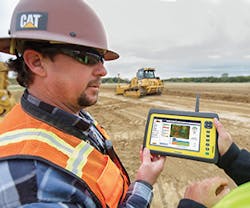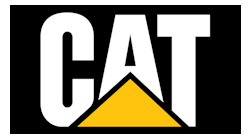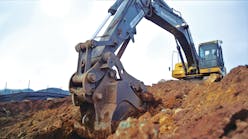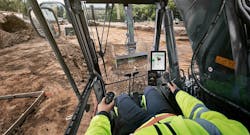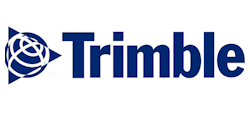Machine control has received a more enthusiastic response in the industry than telematics, primarily because it brings money to the bottom line in a more direct way. But as contractors learn what data is available on telematics systems, they’re expanding their use of those systems as well. The end result is a seamless flow of information between servers in the office and machines and rovers on the job site.
“All the manufacturers are working very hard to be able to create a very good connected site environment,” says Magnus Thibblin, Leica Geosystems, Business Segment Manager for Machine Control in the NAFTA region. “That is what we are all doing. The customers will have a very interesting ride.”
Trimble says it has made two significant improvements in the area of its VisionLink telematics solution for project tracking. The first is the ability to easily transfer data to the VisionLink solution directly from Trimble’s Business Center—HCE office software. This allows the transfer of design information to VisionLink 2D and 3D project monitoring to be more seamless.
Secondly, support has been added to transfer the 3D constructible model to VisionLink in the form of a Corridor Mass Haul analysis or plan for 2D project monitoring. This allows our users to analyze how to best perform their earthworks on corridor projects using Business Center—HCE. This information can then be transferred to VisionLink for near real-time project tracking.
Trimble has made connectivity standard for all the company’s Grade Control Systems. When customers purchase our machine control systems, they now come standard with Connected Machine services. Customers benefit from these Connected Machine capabilities in the following ways:
Wireless Data Sync. Today, transferring design data to machines can be a labor-intensive process. A customer has to get the design data from their data prep technician on a USB stick. The USB stick has to be driven to the job site and/or driven to the machine. The machine has to stop working and the design has to be uploaded into the Trimble Control Box. With Trimble Wireless Data Sync, customers can transfer the design data files directly from the office to the machine over a cellular or Wi-Fi connection, without the machine stopping work.
Remote Assistant. This Web-based service offers enormous benefit to both field personnel on the job site and support personnel in the main office by enabling better remote worker training, and immediate technical support to machine operators, site surveyors, grade checkers, and supervisors. Machine operators can resolve everyday issues such as design file versioning and machine configuration for grade control without ever leaving the cab or taking the machine out of production. A dealer support technician or a contractor’s in-house support personnel can take control of the machine’s in-cab display, identify the design file version, view sensor configurations, and access diagnostics to troubleshoot problems. There is no reason to send a support technician to the site to resolve what is often a simple configuration issue.
Project Monitoring. Trimble Grade Control Systems collect and record machine production information in real time. This data is invaluable for the contractor to manage production targets and project costs. The data can be transferred from the machine to VisionLink—a user-friendly fleet management and project monitoring tool for personalcomputers and mobile devices. VisionLink organizes and reports fleet management data, such as machine location, hours, utilization, and maintenance, material tracking, movement, and quantity, as well as machine production volumes and compaction data.
Trimble VRS and IBSS. Many contractors utilize Virtual Reference Stations (VRS) or manage their own Internet Base Station Services (IBSS) to increase the utilization of machines with machine control without having to deploy global navigation satellite system (GNSS) base stations and site radio infrastructure on construction projects. Trimble Connected Machine capability enables a contractor to easily connect to the Trimble VRS Now service or IBSS in their local area and more quickly deploy machines with Trimble machine control to extend the working range of the machine control systems in the project area.